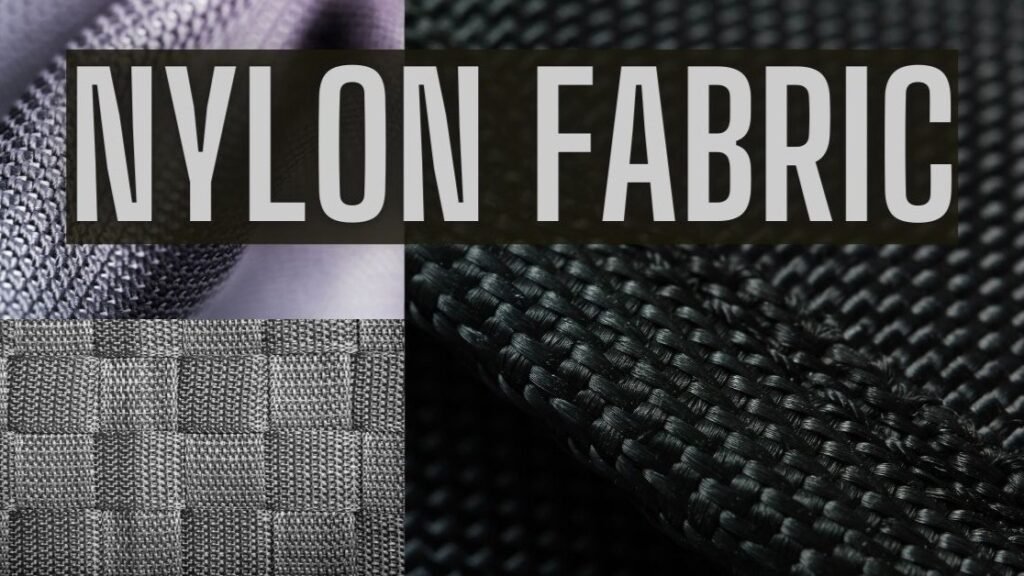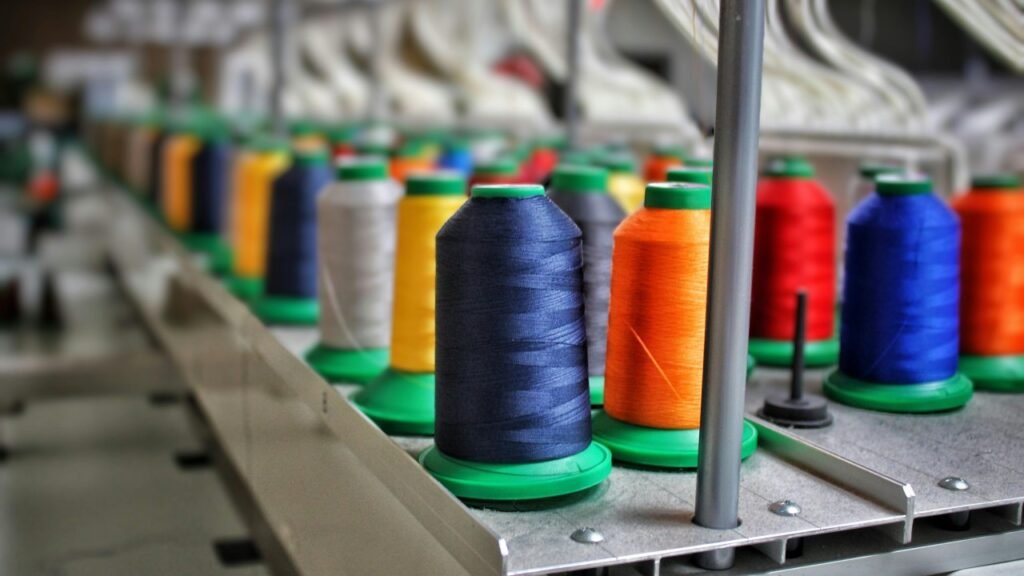
Nylon didn’t just arrive—it shook up the whole fiber world in the 1930s. Suddenly, you had stockings that didn’t ladder instantly, parachutes that survived jumps, and car parts that outlasted metal in some cases. Nylon is a synthetic polymer built from repeating amide bonds, most commonly Nylon‑6 (from ε‑caprolactam) and Nylon‑6,6 (from hexamethylenediamine + adipic acid). Through condensation polymerization, these monomers yield chains with molecular weights often exceeding 50,000 g/mol. Key performance metrics include tensile strength up to 100 MPa, abrasion resistance ratings over 1,000 cycles, and moisture uptake around 2.5%. Today’s nylon spans everything from everyday apparel to automotive under‑the‑hood components—an enduring testament to smart polymer chemistry.
Imagine your running shorts, your child’s soccer cleats, or even the fabric lining in your car’s airbags—all thanks to nylon’s unique chemistry and processing tricks. Ready? Let’s dive deeper.
What are the chemical components of nylon?
At its core, nylon is made by hooking together small molecules (monomers) via amide (–CONH–) linkages.
- Nylon‑6,6 uses two monomers: hexamethylenediamine (C₆H₁₆N₂) and adipic acid (C₆H₁₀O₄).
- Nylon‑6 springs from a single monomer: ε‑caprolactam (C₆H₁₁NO).
After the reaction, you end up with long chains—often 50,000–100,000 g/mol—plus water in the case of Nylon‑6,6. Manufacturers then tweak additives (UV stabilizers, flame retardants) to nail down exactly the behavior they need.
- Monomer Purity: 99.9%+ feedstocks yield fewer chain defects.
- Polymerization Variables: Temperatures of 260–280 °C and pressures up to 5 bar for optimal chain growth.
- Additive Loadings: UV stabilizers: 0.5–2 wt% Flame retardants: 5–20 wt%
| Variant | Monomers | By‑product | Typical M<sub>w</sub> (g/mol) | Additive Range (wt%) |
|---|---|---|---|---|
| Nylon‑6 | ε‑caprolactam | None | 20,000 – 80,000 | UV: 0.5–1; FR: 5–10 |
| Nylon‑6,6 | Hexamethylenediamine + Adipic acid | H₂O | 30,000 – 100,000 | UV: 1–2; FR: 10–20 |
How is nylon manufactured at the molecular level?

Monomer Preparation
Nylon‑6,6
- Adipic Acid Synthesis: Oxidation of cyclohexanol/cyclohexanone with nitric acid → adipic acid (98% purity).
- Hexamethylene Diamine (HMDA): Produced by hydrogenation of adiponitrile over a copper catalyst → HMDA (≥99% purity).
Nylon‑6
- ε‑Caprolactam: Cyclohexanone → oxime → Beckmann rearrangement → ε‑caprolactam (99.5% purity).
High monomer purity minimizes chain defects and residual low‑molecular‑weight species that can plasticize or discolor the nylon.
Condensation (Step‑Growth) for Nylon‑6,6
Initial Salt Formation:
- Equimolar adipic acid + HMDA in water → nylon salt (hexamethylenediammonium adipate) slurry.
Polycondensation Reactor:
- Stage 1 (Low‑Vacuum): Heat to \~260 °C under 1–2 bar to drive off free water.
- Stage 2 (High‑Vacuum): Vacuum pulled to < 10 mbar, temperature up to 280 °C → continuous removal of condensation water.
Chain Growth & Carothers’ Equation:
- Degree of polymerization (DP) relates to monomer conversion: $$ \bar{X}_n = \frac{1}{1 – p} $$ where $p$ is fraction of reacted functional groups. To reach DP ≈ 200–250, conversion must exceed 99.5%.
Molecular Weight Control:
- Temperature & Vacuum Time: Higher temp/longer vacuum → higher DP but risk of thermal degradation.
- Catalysts/Additives: Phosphoric acid (0.01–0.05 wt%) accelerates amide bond formation; antioxidants (0.1–0.5 wt%) limit chain scission.
Ring‑Opening for Nylon‑6
- Initiation: ε‑Caprolactam molten at 250–260 °C; a small amount of water or acid catalyst opens the lactam ring.
- Propagation: Opened chains react with next caprolactam → linear polyester amide.
- Termination: Controlled by cooling or chain‑stopping agents to set molecular weight (\~50,000 g/mol).
Reactor Types & Process Engineering
| Feature | Batch Reactors | Continuous Reactors |
|---|---|---|
| Capacity | 1–50 tons per batch | 10,000+ tons/year per line |
| Flexibility | Easy grade change | Optimized for single grade |
| Temperature Control | Uniform, but slower ramp-up | Precise, rapid response via zones |
| Vacuum Efficiency | Limited by condenser capacity | Dedicated multi‑stage vacuum trains |
| Quality Consistency | Batch‑to‑batch variability possible | Very tight molecular weight distribution |
Continuous processes dominate large‑scale production, whereas specialty nylons often use batch reactors for recipe flexibility.
Polymer Melt Processing & Degassing
- Melt Homogenization: Melted polymer passes through devolatilization extruders where remaining water and low‑mw byproducts are stripped under vacuum (< 1 mbar).
- Filtration: Fine metal‑mesh screens remove gel particles, ensuring smooth melt for spinning or molding.
- Pelletization: Strand cooled in water baths, cut into uniform pellets (2–4 mm), then dried (< 0.02% moisture) to prevent hydrolysis downstream.
Crystallization, Morphology & Property Tuning
- Cooling Rate Effects: Slow Cooling: Larger spherulites → higher crystallinity (\~40–45 %) → stiffness and heat resistance. Rapid Quench: Smaller crystallites → more amorphous fraction → toughness and dye uptake.
- Post‑Heat Treatment: Annealing at 80–120 °C for 1–3 h can relieve internal stresses, sharpen melting point, and improve dimensional stability.
From Polymer to Fiber: Spinning & Drawing
Melt or Solution Spinning: Polymer extruded through hundreds of micron‑sized spinneret holes.
Primary Cooling: Filaments chilled on air‑cooled rollers or water baths to lock in molecular orientation.
Drawing (2–6×): Cold‑drawing aligns polymer chains and crystals along fiber axis, boosting tensile strength by 30–50%.
Texturizing (for apparel): False‑twist or air‑jet texturizing introduces loops and crimps for bulk, stretch, and moisture‑wicking.
Key Takeaways: Molecular Controls → End‑Use Performance
- Chain Length & Distribution: Dictates melt viscosity (processing) and mechanical strength.
- Crystallinity & Orientation: Balances stiffness vs. toughness and dyeability.
- Additive Package: Customizes UV resistance, flame retardancy, antimicrobial action.
- Processing History: Every thermal cycle—polymerization, drying, spinning, finishing—leaves molecular “fingerprints” that define performance envelopes.
By mastering each of these molecular‑to‑macroscopic steps, manufacturers tailor nylon grades for everything from silky hosiery to engine‑bay brackets. Understanding these nuances empowers you to choose or design the perfect nylon for your next product.
Which types of nylon polymers are most common?

When it comes to nylon, about 80 % of the market is dominated by three workhorse grades:
- Nylon‑6,6 Synthesized from hexamethylenediamine and adipic acid High melting point (\~265 °C) Excellent abrasion and chemical resistance
- Nylon‑6 Made via ring‑opening polymerization of ε‑caprolactam Melting point around 220 °C More ductile and easier to process
- Nylon‑11 / Nylon‑12 Bio‑based from castor oil derivatives Lower water absorption (< 1 %) Good flexibility and chemical resistance
| Property | Nylon‑6 | Nylon‑6,6 | Nylon‑12 |
|---|---|---|---|
| Melting Point (°C) | \~220 | \~265 | \~178 |
| Tensile Strength (MPa) | 60–75 | 75–90 | 50–65 |
| Water Uptake (%) | \~2.3 @ 23 °C | \~2.5 @ 23 °C | < 1 |
| Typical Uses | Textiles, film | Automotive parts, industrial belts | Flexible tubing, cable jacketing |
Why it matters:
- Nylon‑6,6 shines in high‑stress and high‑temperature settings—think engine components or heavy‑duty gears.
- Nylon‑6 trades a bit of heat resistance for greater toughness and simpler processing—ideal for garments and injection‑molded parts.
- Nylon‑11/12 brings a greener story (castor oil feedstock) and minimal moisture uptake, perfect for fuel lines and medical tubing.
By choosing the right nylon grade, you balance performance needs—strength, flexibility, moisture behavior, or environmental footprint—for your specific application.
What physical and mechanical properties make nylon unique?
Nylon stands out because it strikes a rare balance between strength, toughness, and elasticity:
- High Tensile Strength: Up to 100 MPa, rivaling some metals in cable and gear applications.
- Excellent Abrasion Resistance: Survives 1,000+ Taber Abrader cycles with minimal material loss.
- Impressive Elongation: Break strains of 50–300 %, giving it snappy stretch and recovery.
- Balanced Crystallinity: Typically 30–40 % crystalline—enough rigidity for structure, yet amorphous regions for impact toughness.
- Moisture Uptake: Absorbs 2–3 % water by weight, which can plasticize the polymer to improve flexibility (though at the cost of dimensional stability).
- Thermal Performance: Glass transition around 50–60 °C, melting between 220–265 °C depending on grade.
| Property | Typical Range | Why It Matters |
|---|---|---|
| Tensile Strength (MPa) | 60 – 100 | Load‑bearing and wear‑resistant parts |
| Elongation at Break (%) | 50 – 300 | Stretchable fibers and shock‑absorbing uses |
| Abrasion Cycles | 1,000 – 1,500 | Durable in high‑friction environments |
| Water Absorption (%) | 2.0 – 3.0 | Affects flexibility, dyeing, and drying time |
| Glass Transition (°C) | 50 – 60 | Limits for rubbery vs. glassy behavior |
| Melting Point (°C) | 220 – 265 | Determines processing and end‑use temp range |
- Fiber Applications: High strength + elongation = elastic yet strong textiles (e.g., activewear).
- Engineering Plastics: Combines stiffness and impact toughness for gears, bearings, and fasteners.
- Surface Performance: Low friction coefficient (0.2–0.3) and abrasion resistance extend component life.
Together, these attributes make nylon a go‑to polymer for everything from silky stockings and parachutes to under‑the‑hood automotive parts and industrial machinery.
How is nylon processed into fabrics and finished goods?
Nylon pellets are first melt‑spun at 250–270 °C through fine spinnerets, forming continuous filaments. Those filaments are drawn (2–6× their original length) to align polymer chains, boosting tensile strength by up to 50 %. Next, yarns undergo texturizing (air‑jet or false‑twist) to add bulk, stretch, and moisture‑wicking. Fabrics are then knit (circular, warp) or woven (tricot, dobby), followed by dyeing (100–130 °C baths), heat‑setting, and functional finishes (e.g., PFAS‑free DWR at 0.3–0.5 wt%).
Spinning Technologies
- Melt Spinning: 90–95 % of nylon fabrics; water‑free, high throughput.
- Solution Spinning: Used for specialty nylons; solvent recovery adds cost.
Drawing & Orientation
- Draw ratios of 2× yield \~60 MPa → 4× yield \~90 MPa tensile strength.
- Cooling rate controls crystallinity (30–45 %) and dye affinity.
Yarn Engineering
- Denier: 20–500 denier for apparel vs. 1,000–2,000 denier for industrial textiles.
- Filament Count: 68–288 filaments per yarn for smooth hand feel or durability.
Fabric Constructions
| Construction | Characteristics | Typical Uses |
|---|---|---|
| Circular Knit | Seamless, stretchy | Hosiery, activewear |
| Warp Knit | Stable, quick‑dry | Swimwear, lingerie |
| Woven Tricot | Smooth face, textured back | Lining fabrics, sportswear |
| Ripstop Weave | Reinforced grid for tear resistance | Tents, parachutes, backpacks |
Finishing & Functionalization
- Dyeing: Exhaust or pad‑dry‑pad methods; color yield 95–98 %.
- Heat‑Setting: 160–200 °C for 1–2 min to lock dimensional stability.
- Finishes: Moisture‑Wicking: Silicone or PBT coatings at 1–2 wt%. DWR (Durable Water Repellent): Fluorine‑free alternatives at 0.3–0.5 wt%; hydrostatic head > 8,000 mm H₂O. Antimicrobial: Silver‑ion or QAC finishes at 0.1–0.5 wt%.
By tailoring each step—spinning, drawing, construction, and finishing—manufacturers fine‑tune nylon fabrics for everything from silky stockings to rugged outdoor gear.
What are the disadvantages and health concerns of nylon?
Moisture Uptake & Dimensional Instability
- Uptake: Nylon can absorb 2–3 % of its weight in water at 50 % relative humidity.
- Effect: Swelling can cause up to 2–3 % dimensional change, leading to fit issues in apparel or tolerance problems in precision parts.
UV Degradation & Yellowing
- Exposure: After roughly 1,000 hours in a Xenon‑arc UV weatherometer, nylon can lose 10–15 % of its tensile strength.
- Visible Sign: Fibers often yellow or become brittle without UV stabilizers (typically added at 1–2 wt %).
Static Build‑Up & Pilling
- Static Charge: Low moisture content can lead to surface charges, causing cling or sparks in dry environments.
- Pilling: At yarn deniers above 300 d, surface fibers can form pills under abrasion.
Environmental Footprint
- Carbon Emissions: Producing 1 ton of virgin nylon‑6,6 emits ≈ 2.5 t CO₂e.
- Non‑Biodegradability: End‑of‑life reliance on mechanical or chemical recycling; landfill persistence if not recovered.
Health Concerns
| Concern | Detail | Mitigation |
|---|---|---|
| Residual Monomers | Trace ε‑caprolactam or HMDA (< 50 ppm) can irritate very sensitive skin. | Thorough post‑polymer wash and drying |
| PFAS‑Based Finishes | Traditional water‑repellent coatings may contain long‑chain PFAS linked to health risks. | Switch to short‑chain or fluorine‑free DWR |
| VOC Off‑Gassing | Minor outgassing of solvents or by‑products can occur from solution‑spun nylons. | Extended drying (80 °C, 4 h) and low‑VOC processes |
| Allergic Reactions | Rare cases of contact dermatitis in extremely sensitive individuals. | Use OEKO‑Tex® or Bluesign® certified yarns |
- Is nylon unhealthy to wear? For most people, no—nylon is inert and skin‑safe once fully polymerized and washed. Only ultra‑sensitive individuals might react to trace monomers or finishes.
- Does nylon degrade over time? Yes. Hydrolysis (especially at pH > 8 and high heat) can cleave amide bonds, causing gradual strength loss—roughly 1 % molecular‑weight reduction per week in alkaline conditions.
By understanding these limitations—moisture effects, UV sensitivity, static, environmental footprint, and trace chemical concerns—you can make informed choices about when and where to use nylon, and how to mitigate any downsides.
Are there sustainable or recycled nylon options available?

Recycled nylon (often branded as Econyl® or rNylon) is made by depolymerizing waste materials—fishing nets, carpet scraps, and industrial off‑cuts—and repolymerizing them into virgin‑grade nylon. This process cuts cradle‑to‑gate CO₂ emissions by up to 90 % compared to virgin nylon. Bio‑based nylons like Nylon‑11/12 use renewable castor‑oil monomers, reducing fossil feedstock dependency by 100 %. Together, these alternatives now account for 15–20 % of global nylon production.
- Mechanical vs. Chemical Recycling Mechanical: Shreds and remelts discarded fibers; retains polymer structure but often yields lower‑performance grades. Chemical (Depolymerization): Breaks nylon back down to monomers, then repolymerizes—achieving up to 95 % of original properties.
- Key Players & Supply Chains Producer Feedstock Sources Annual Capacity CO₂ Reduction vs. Virgin (%) Aquafil Fishing nets, carpet waste 15,000 t \~90 DuPont™ Textile scrap, industrial offcuts 8,000 t \~85 RadiciGroup Pre‑consumer waste 5,000 t \~80
- Bio‑Based Nylons Nylon‑11/12 from castor oil: 100 % renewable carbon, 70 % lower CO₂e footprint vs. virgin Nylon‑6,6. Challenges: higher raw‑material cost and competing land‑use for food vs. industrial crops.
- Certifications & Standards Global Recycled Standard (GRS): Verifies recycled content (> 50 % required). bluesign®: Ensures sustainable chemical use and low environmental impact. Oeko‑Tex® Standard 100: Tests for harmful substances in finished fabrics.
- Market Trends Recycled and bio‑nylons growing at 10 % CAGR, projected to reach 25 % market share by 2030. Innovative R\&D into enzymatic depolymerization and closed‑loop textile recycling aims to push that even higher.
By choosing recycled or bio‑based nylon, brands can significantly reduce environmental impact without sacrificing the performance that made nylon a staple in textiles and engineering applications.
Ready to customize your next nylon innovation?
Absolutely—let’s bring your nylon ideas to life!
At Szoneier, we’ll work side‑by‑side to:
- Fine‑tune polymer formulations for your performance targets
- Select the perfect spinning and finishing processes
- Develop color, texture, and functional finishes (moisture‑wicking, DWR, antimicrobial)
- Prototype samples in 5–7 days and scale up with low MOQs
📩 Drop us your specs at info@szoneierfabrics.com
🌐 Explore our capabilities and request a quote at http://www.szoneierfabrics.com/
Can’t wait to customize your next nylon innovation!

